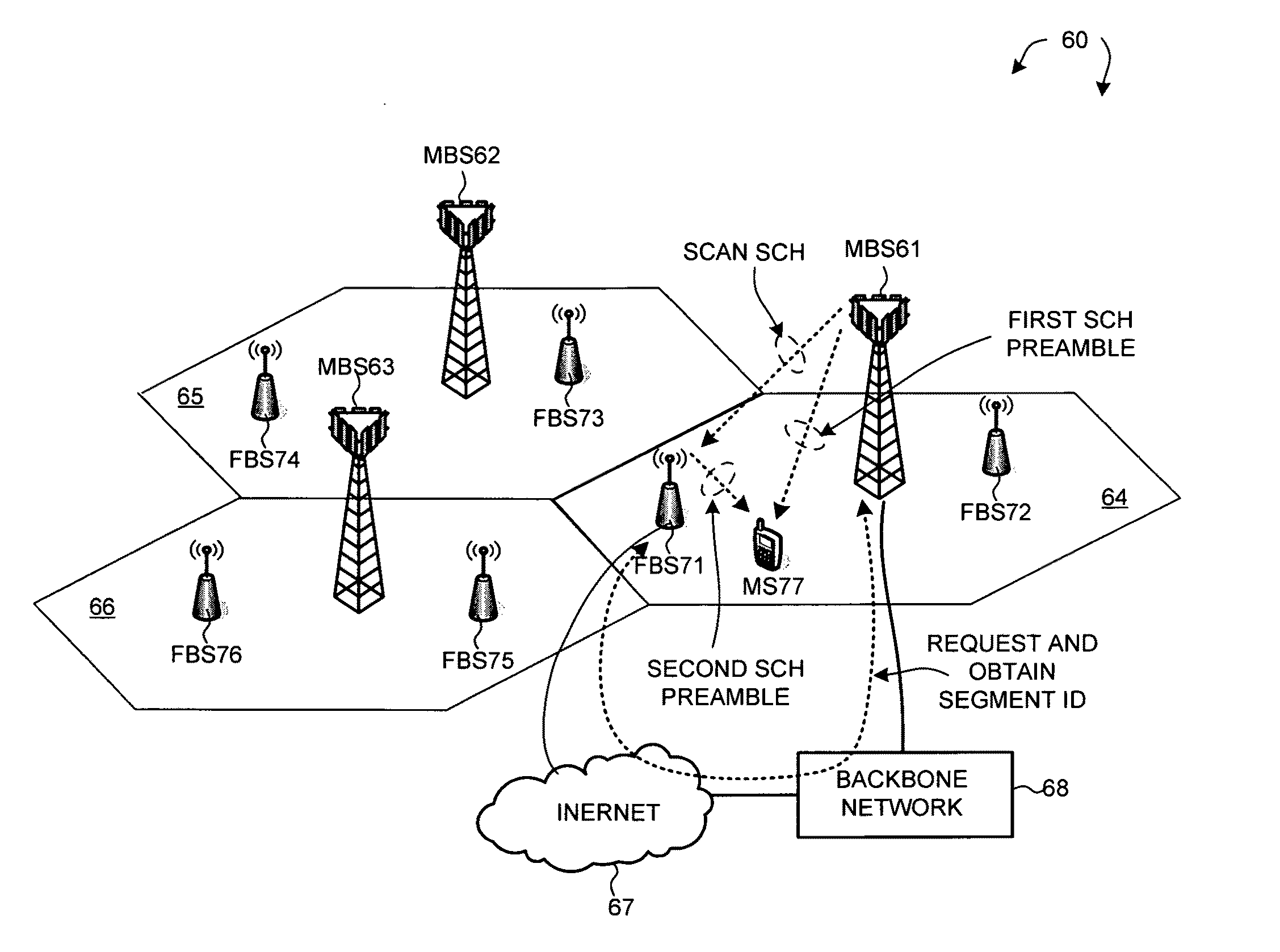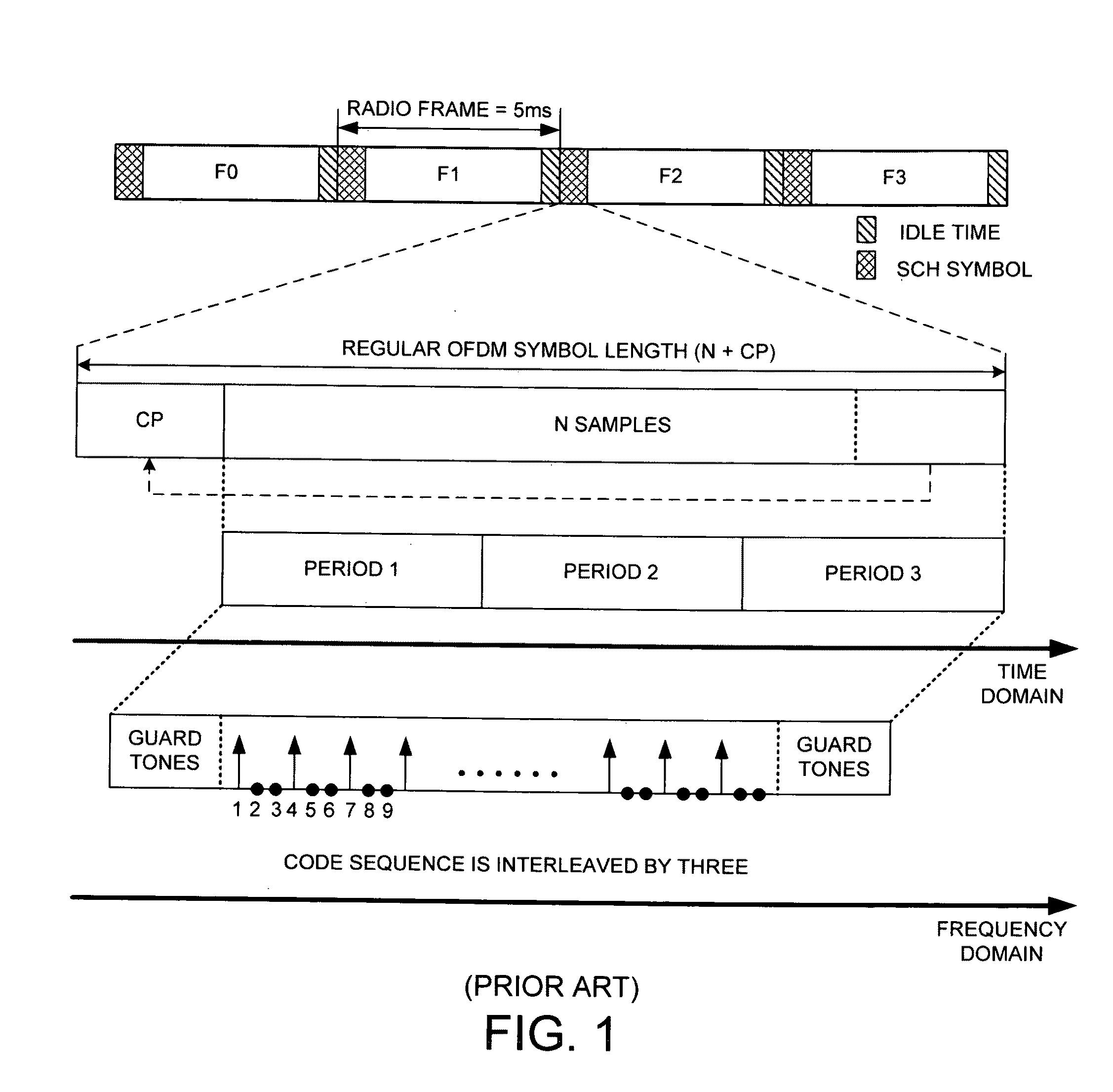Synchronization channel for advanced wireless OFDM/OFDMA systems
a technology of wireless ofdm/ofdma and synchronization channel design, applied in the field of wireless network communications, can solve the problems of increasing the difficulty of sch preamble detection, degrading the preciseness ieee 802.16e sch design, so as to improve the accuracy of frame boundary estimation, improve the flexibility of femtocells, and mitigate interferences in s-sch
- Summary
- Abstract
- Description
- Claims
- Application Information
AI Technical Summary
Benefits of technology
Problems solved by technology
Method used
Image
Examples
first embodiment
[0028]FIG. 3 illustrates the novel two-stage SCH structure in advanced system only mode. In advanced system only mode, only an advanced system such as an IEEE 802.16m system exists in the occupied channel bandwidth. As illustrated in FIG. 3, in a time-domain representation, each radio frame in Frequency-Division Duplexing (FDD) mode starts with an SCH symbol followed by a DL frame and ends with an idle time. On the other hand, each radio frame in Time-Division Duplexing (TDD) mode starts with an SCH symbol followed by a DL frame, and then an idle time followed by an UL frame, and finally ends with another idle time. In both FDD mode and TDD mode, each SCH symbol is the first OFDM symbol in each DL frame, in which S-SCH and P-SCH together occupies one OFDM symbol time length of a regular data channel. If Ts represents the time length of one regular OFDM symbol, and Tg represents the time length of guard interval, then Ts=Tg+Tu, where Tu is the time length of one useful OFDM symbol. I...
second embodiment
[0031]FIG. 4 illustrates the novel two-stage SCH structure in an advanced system only mode. FIG. 4 is similar to FIG. 3, except for the method of creating a two-period time-domain structure for PA-Preamble transmission. In the example of FIG. 4, the same 512 FFT size is used for P-SCH as used for S-SCH. However, each cell uses only half of the allocated frequency subcarriers for PA-Preamble transmission. For example, cell 1 uses subcarriers 1, 3, 5 . . . and so on so forth to transmit its PA-Preamble, while cell 2 and cell 3 also use subcarriers 1, 3, 5 . . . and so on so forth to transmit their PA-Preamble. By interleaving subcarriers to transmit preamble code sequences, the same two-period time-domain structure as in FIG. 3 is created.
[0032]FIG. 5 illustrates an embodiment of the novel two-stage SCH structure in legacy system support mode. In legacy system support mode, a legacy IEEE 802.16e system and an advanced IEEE 802.16m system share the occupied channel bandwidth. To avoid ...
PUM
 Login to View More
Login to View More Abstract
Description
Claims
Application Information
 Login to View More
Login to View More - R&D
- Intellectual Property
- Life Sciences
- Materials
- Tech Scout
- Unparalleled Data Quality
- Higher Quality Content
- 60% Fewer Hallucinations
Browse by: Latest US Patents, China's latest patents, Technical Efficacy Thesaurus, Application Domain, Technology Topic, Popular Technical Reports.
© 2025 PatSnap. All rights reserved.Legal|Privacy policy|Modern Slavery Act Transparency Statement|Sitemap|About US| Contact US: help@patsnap.com



